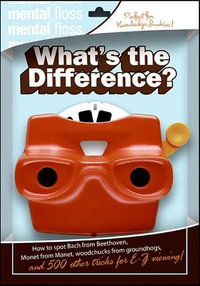
eTEXT
Introduction to Web Interaction Design
With HTML and CSS
By: Michael Macaulay
eText | 6 July 2017 | Edition Number 1
At a Glance
eText
$134.20
Instant online reading in your Booktopia eTextbook Library *
Read online on
Not downloadable to your eReader or an app
Why choose an eTextbook?
Instant Access *
Purchase and read your book immediately
Read Aloud
Listen and follow along as Bookshelf reads to you
Study Tools
Built-in study tools like highlights and more
* eTextbooks are not downloadable to your eReader or an app and can be accessed via web browsers only. You must be connected to the internet and have no technical issues with your device or browser that could prevent the eTextbook from operating.
This book introduces standard and new HTML5 elements and attributes and CSS3 properties commonly used in Web design as well as design guidelines for their effective use. Its approach of explaining every line of code in the examples it uses to show the usage of the HTML elements and CSS properties introduced makes it an invaluable Web design resource for beginners as well as intermediates looking to fill in gaps in their knowledge. In addition, the inclusion of user-centered design process stages and how they are best managed in website development makes the book unique in its area. Also, the book's approach of including challenges after each topic to help refresh readers' knowledge, as well as make them think, ensures that there are ample activities to keep learners motivated and engaged.
Key Features
Comprehensively covers standard and new HTML5 elements and attributes and CSS3 properties.
Includes a lot of challenges/exercises; one after each HTML element or CSS property introduced and demonstrated with examples.
Example codes can be copied and pasted as-is to implement and experiment with.
For every HTML element or CSS property introduced, guidelines are provided, where relevant, on how to best use them in a design to enhance usability and accessibility.
Includes comprehensive explanation of flexible box and grid layout models and how to use them to create responsive and adaptive Web design.
Covers the importance of visual aesthetics in design, including design elements and principles and examples of how they can be applied in Web design to produce good user experience.
Includes comprehensive guidelines on how to design for standard and mobile screens, including discussion of touch gesture interaction design and standard gestures and the functions for which they are most commonly used.
Introduces the stages of user-centered design process, including Web accessibility and user-experience testing, and managerial aspects of Web development, including intellectual property.
Provides a brief introduction on how to make HTML and CSS codes more compact and more efficient and how to combine them with other languages commonly used in Web design and development, such as JavaScript, AJAX, and PHP.
Read online on
ISBN: 9781317432807
ISBN-10: 1317432800
Published: 6th July 2017
Format: ePUB
Language: English
Publisher: Taylor & Francis
Edition Number: 1
You Can Find This eBook In
This product is categorised by
- Non-FictionComputing & I.T.Digital Lifestyle & Online World: Consumer & User GuidesComputer Games & Online Games Strategy Guides
- Non-FictionComputing & I.T.Computer Science
- Non-FictionComputing & I.T.Graphical & Digital Media ApplicationsWeb Graphics & Design
- Non-FictionComputing & I.T.Computer Programming & Software DevelopmentWeb Programming
- Non-FictionArts & Entertainment
- Non-FictionComputing & I.T.Graphical & Digital Media ApplicationsDigital Animation
- Non-FictionComputing & I.T.Computer Programming & Software DevelopmentGames Development & Programming























